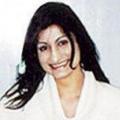TWO centuries ago a landowner from Bolton gave the order for mounted troops to disperse a crowd gathered on St Peter’s Field as part of a campaign for voting rights for working people.
William Hulton, born at Hulton Park, Westhoughton, summoned the local Yeomanry to deal with the 60,000 people who had gathered to hear political reformer Henry Hunt.
Eighteen people were killed and around 700 injured.
His story is told in a special exhibition at Bolton Museum to remember the victims of what became known as the Peterloo Massacre.
The small but poignant exhibition lists the names of the 23 local people who were injured at the meeting — and explores the issues which motivated people from Bolton to march to Manchester.
The good natured protest featured music and people dancing, and so determined were they to prove their peaceful intentions they banned anything that could be construed as a weapon and people left their walking sticks behind in pubs along the way to the rally.
But as Hunt started to speak magistrates ordered the local yeomanry to arrest him and break-up the meeting.
Supported by the regular cavalry, they charged into the crowd on horseback with swords drawn.
The first name listed is of John Ainsworth, a weaver, aged 24 of Duncan Street, Bolton. He was was married with two children. He received a “severe sabre cut on his right cheek and two further cuts.”
The backdrop to the 1819 protest was one of economic hardship with the people of Bolton and other northern towns maintaining Parliamentary reform for fairer representation provide the answer — Bolton did not have its own MP until after 1832 Reform Act.
The exhibition is one of a number of events staged across Greater Manchester to mark the anniversary of the event.
This included the unveiling of a memorial and a gathering on St Peter’s Field for a day of music and song in remembrance last Friday.
The memorial, designed acclaimed artist Jeremy Deller and Caruso St John Architects, features the names of the 18 men, women and children who died.
The exhibition runs until November 10.








Comments: Our rules
We want our comments to be a lively and valuable part of our community - a place where readers can debate and engage with the most important local issues. The ability to comment on our stories is a privilege, not a right, however, and that privilege may be withdrawn if it is abused or misused.
Please report any comments that break our rules.
Read the rules here